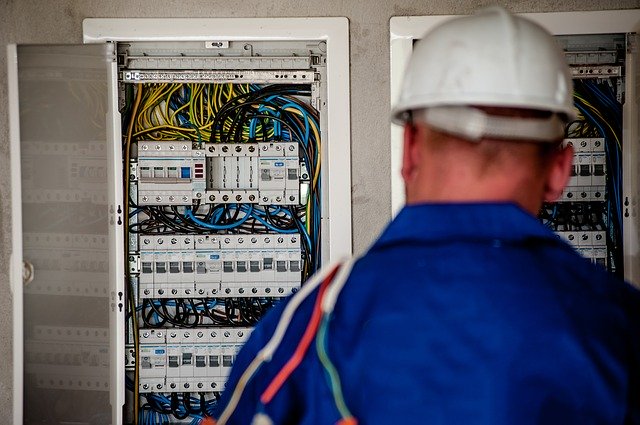Understanding basic electricity is essential for anyone. Business owners may encounter dealing with a contractor such as an electrician for commercial services at some point. And it is wise to possess knowledge about what is going on with the building’s electrical system. It makes a lot easier for both parties to maintain effective service, be it for installation, repairs, or maintenance.
Electric current is the movement of electrons in the conductor. The very simple model of an atom, Bohr diagram, consists of a single nucleus made up of neutrons and protons. The electrons on the orbits are surrounding the central nucleus. In metals, the electrons are loosely bound to the nucleus to quickly move when there’s voltage. These are conductors and can transmit electricity, and the current refers to the movement of electrons.
Table of Contents
Basic terminologies
An electrician for commercial service may use terms that are unfamiliar to ordinary individuals, and it can be difficult to relate to the discussion. Hence, it is imperative to familiarise oneself with the basic electrical terms below.
Volts
The pressure existing in a circuit is the voltage and measured out in volts. In a water pipe scenario with a pump, the higher the pressure and the force exerted from the pump, the stronger the water flow running through the pipe. In an electrical context, the voltage source acts as a pump and shoves the electrons circling the circuit. The higher the voltage used to a circuit, the stronger the current is.
Ampere
Ampere is the measurement of the electromagnetic force existing in electrical conductors carrying the electric current. When the current is high, it means there are more electrons present in the circuit.
Watts and kilowatt-hours
Watt measures electric power. Kilowatt-hours measure energy consumption. Electricians typically use these two terms when discussing the cost-effectiveness of appliances, devices, and other electrical equipment in a building. Building owners are very conscious of energy consumption. A reliable electrician for commercial service will thoroughly explain and suggest ways to minimize electricity and recommend energy-saving equipment.
Saving electricity
Besides having a basic knowledge of electricity, learning how to conserve energy will be part of the discussion with the contractor. An experienced electrician for commercial service will usually recommend controlling the thermostat in the room. Regular use of air conditioners and heaters can blow up the electricity bill.
During winter, setting the thermostat to 60 degrees is enough to keep the room warm. Remember that the higher the thermostat setting, the heater has to work harder, which leads to more energy consumption. Wearing more layers of clothes can significantly help in keeping warm. Hence, don’t rely too much on the heater to keep the room warm. Sweaters, jackets, and scarves can do the trick, and they don’t require any electricity at all.
On the other hand, sunny weather will require high temperatures to keep the room cool. A thermostat setting of 78 degrees is enough to maintain cool air in the place. This temperature has lesser energy consumption, and there is not much difference in the room’s temperature. Also, in milder days using electric fans is feasible and more cost-efficient. Eclectic fans don’t consume much energy as air conditioners do. Thus, they are great alternatives when the office is trying to cut down electricity consumption. These fans are ideal in small rooms like pantries or not frequently used areas.

